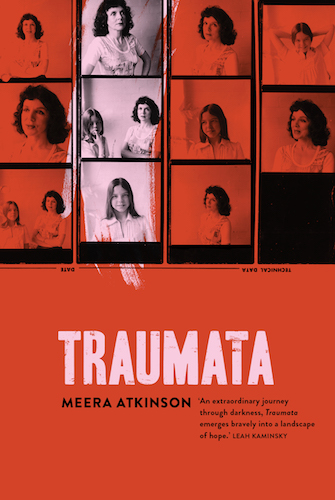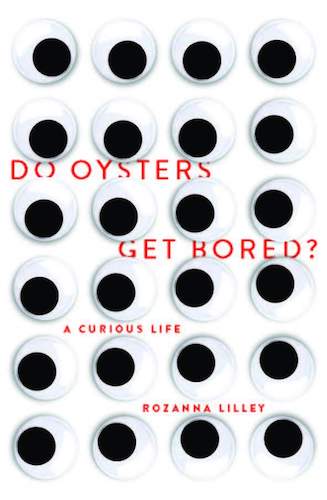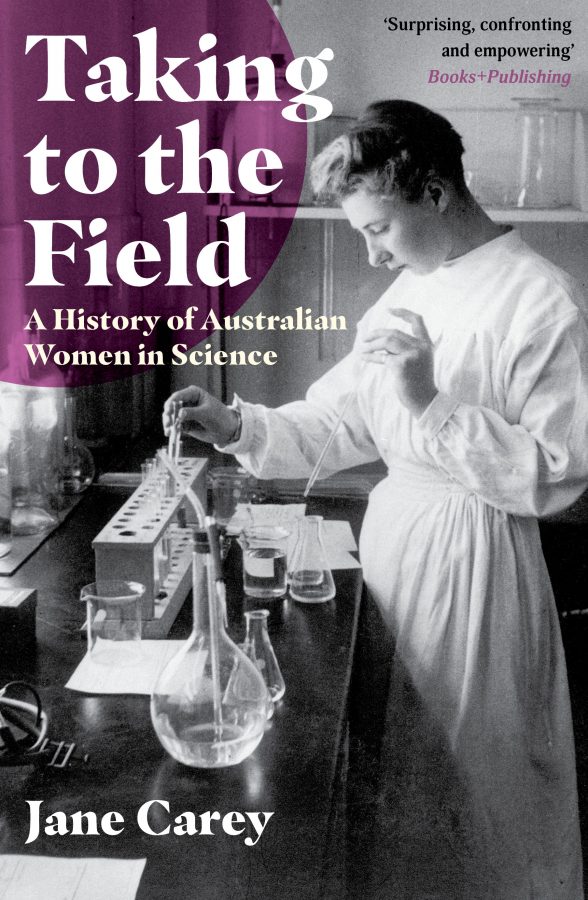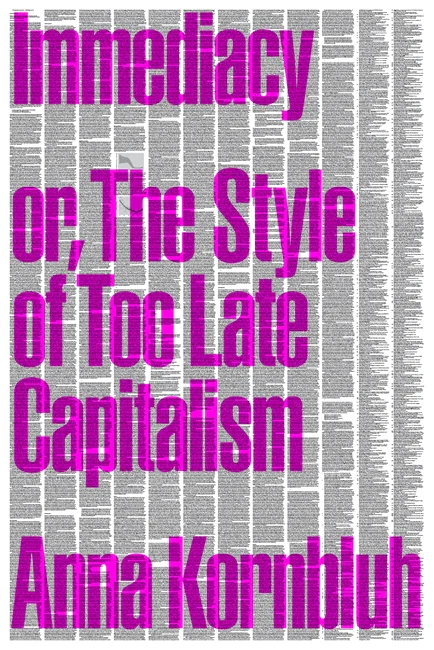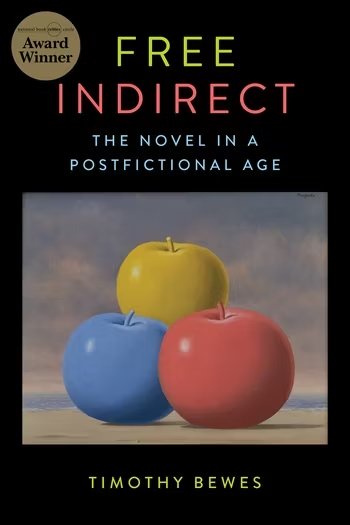‘To whom should I complain? Did I tell this, who would believe me?’
— Isabella, Act II, Scene 4, William Shakespeare, Measure for MeasureWhat would happen if one woman told the truth about
her life?
The world would split open
— Muriel Rukeyser, ‘Kathe Kollwitz’
In her groundbreaking 1988 study of women’s biography Writing a Woman’s Life, literary scholar Carolyn Heilbrun wrote:
Feminist criticism, scholarship, and theory have gone further in the last two decades than I, even in my most intense time of hope, could have envisioned. Yet I find myself today profoundly worried about the dissemination of these important new ideas to the general body of women.
Heilbrun was interested in how feminist theory translates into practice in people’s lives, and wrote her book about the lives of female writers as an investigation into the subject. Now, there’s more of other people’s lives available to read than at any other point in history; the memoir form expands, fragments, explodes into new configurations, and it’s a rich if frustrating time for feminist thinking. I like to think Heilbrun would have been excited by this development; feminist thought is circulating ever more widely to people who need it. Drawing on the work of Adrienne Rich, Heilbrun wrote of her ‘belief that it is only the willingness of women to share their “private and often painful experience” that will enable them to achieve a true description of the world, and to free and encourage one another’.
Heilbrun wrote her book in the late eighties and she was building on the developments of second-wave feminism that gathered pace so spectacularly in the 1970s. But what was it actually like to be a female child and then teenager in that supposedly revolutionary era? It’s instructive to look at life writing by those who are most vulnerable when considering the machinations of history, and two recent memoirs by women who grew up in ‘sexually liberated’, artistic Australia at that time present a sobering picture: of predatory and violent men whose actions continue to have repercussions for the children who grew up to be the poet, essayist and autism researcher Rozanna Lilley and the writer, literary scholar and trauma researcher Meera Atkinson.
The timing of these two books’ publication felt uncanny; I read Lilley’s Do Oysters Get Bored? and Atkinson’s Traumata last year, a year in which I’d finally begun to see a trauma therapist, as I started, with many others, to acknowledge openly the pervasiveness of sexual assault and abuse, and just how much of an effect it has had on us. It felt as if I were inhabiting two different realities: compulsively glued to #MeToo, I relived my own traumas, swimming in dark emotion as old memories came up, an insistent remembering that resisted control. I wanted to look away, but couldn’t; Lilley’s cinematic metaphor ‘I am replaying the past, and the machine refuses to turn off’ captures it precisely. Meanwhile, out in the ‘real’ world, male friends seemed to speak from very far away, showing sides I didn’t like: one told me I sounded like a man-hating psycho after I wrote an irritated social media post about a man who’d interrupted me working at the library to talk to me in a baby voice. Another commenced an explanation of ‘the controversy’ about the finer shades of consent. Women needed to behave better online, he said. Another gleefully recounted winning an argument with a woman; in a high-pitched, mocking voice he repeated her words: ‘I’m just so sick of men telling me how to feel about this’, clearly expecting me to laugh with him. Wave after wave of #MeToo broke.
As naive as Don Quixote – or Middlemarch’s Dorothea Brooke – I keep expecting the world to have evolved. I carry centuries of literature by female writers in my head, and am always shocked to be reminded that not everyone has caught up with the basic idea that women are thinking, feeling, art-producing beings. It’s a shock that persists – dumbly, stubbornly – even as I learn more about my own tendency to minimise and block memories and feelings, to not know these things I really do know. It’s like opening the door of an apparently stable and solid house and stepping inside only to find there is no floor and one has fallen through – a literal image of the house Lilley grew up in and and whose symbolic significance she employs to great effect: ‘If you gaily opened the front door/a pit greeted instead of a room’ begins the poem ‘Warp and weft’, dealing with the first time she is sexually assaulted, by a builder working on the family house. The floor goes unmended; the person who is there to fix it instead does more damage. The poem’s devastating last line forms a stanza on its own: ‘I was 11’. No final punctuation, no resolution. It’s striking that Atkinson uses a similar metaphor: ‘I’ll never forget the first time I was accosted and harassed out of the blue. I was around eleven… It was as if the earth had opened up under my feet, exposing the hell of rape culture beneath society’s seeming civility.’
It’s no accident that some of the most interesting, formally innovative memoir work is currently being done by women; the structures of patriarchy do not serve us well, and it is only fitting that work that challenges those structures should ‘break the sequence’, in Virginia Woolf’s phrase. Atkinson takes a fictocritical approach to her story, a technique that marries the arts of the scholar and the poet, bringing a lyrical grace to writing born of deep research. Traumata steers a fragmentary, non-linear course through memories, textual analysis, and Atkinson’s lucid and meticulous explanation of trauma’s systemic, cyclical patterns. This is a great service to readers, as the book also works as a scrupulously careful guide and introduction to many helpful resources, from the academic to the popular.
In Do Oysters Get Bored? Lilley shapes her material into essays and poems, a formal innovation that permits both the discursive potential of the essay and the compression required of poetry. Her poet’s sense for language results in frequently gorgeous prose, such as this sentence:
…flat sandstone rocks, repetitively incised with axe-grinding grooves, and middens dense with fragments of mussels and mud oysters are a permanent reminder that while Europeans have exploited the area for logging and grazing since the nineteenth century, Aboriginal occupation has a much longer history.
Such attention to colonial violence, Aboriginal dispossession and racism must underpin any honest discussion of trauma in the Australian context, and it’s a feature of Atkinson’s work too, connecting this structural abuse of power to other systems of violence. Her characteristic thoroughness renders an interrogation of her own complicity in racist bullying at primary school: ‘as with gender, the learnings seep in from all around from the moment we can make even partial sense of a sound or an image.’ This approach forms a useful model for white people who are still learning to look at our own part in perpetuating racism without becoming defensive.
Lilley’s focus on patterns in language picks up on another preoccupation: the unusual brains of people on the autism spectrum. The title Do Oysters Get Bored? comes from a question her son, diagnosed with autism, asks her. What goes on in the minds of others? What kind of brain thinks to ask about molluscoid emotional states? Lilley writes, ‘To paraphrase Henry James, it would be fair to say that all of my family, both more and less eminent, have oddities and disparities that often force one, thinking them over, to wonder what they really quite rhyme to.’ There’s a careful scepticism to her thinking: ‘Medical professionals believe they have an apt description for my son: “autistic disorder”. Indeed in many respects he is a textbook ambassador for this most modern of conditions.’ There’s a growing movement by the ‘neurodiverse’ to recognise that existing along the autism spectrum may not be a disorder at all. Rather, it is the ways in which they (we) are not accommodated that causes trauma.
It’s a cruel irony that autism, a defining characteristic of which is excellent pattern recognition, both equips a person better than most to see the patterns of abuse of power at work, and renders that person more likely to be a target of them. A 2016 paper by autism researchers at Harvard found that ‘persons with autistic traits may be at elevated risk for interpersonal victimization across the life span’. Autism is still not well understood, and is often not spotted in girls. Girls like me who, for example, struggled with eye contact and felt confused by social rules, obsessively collected particular objects, could not bear certain textures, craved solitude, frequently went mute, reacted badly to strong light and resisted shoes (Lilley: ‘Oscar is nine and not good with new shoes. If you say this to any parent of a kid with autism, they immediately laugh’) were called ‘fey’ or more often, ‘irritating’ or ‘ya fucken freak’, not autistic. I attracted bullies and couldn’t work out why.
When I was a child in the seventies and eighties, bullying was believed to be character-building. By this warped logic, as the world was full of bullies, being subjected to bullying as early and often as possible was supposed to prepare us for it. Instead, we began our lives already traumatised, conditioned to accept such treatment and furthermore objects of contempt for having failed to stand up for ourselves. The word ‘victim’ is still weaponised as a slur; even those of us to whom it indisputably applies hesitate to claim the label.
Lilley is wary of pathologising diagnoses, describing attempts to send Oscar to special schools and treat his anxiety which only create more stress. He is finally happiest at a school for ‘“normal” kids’ – the quote marks are important – who accept him as he is. At Oscar’s birthday party, ‘kids take it in turns to come into the kitchen and tell me their favourite story about what Oscar said or did at school. It seems that his oddities and social incomprehension have landed him a starring role.’ To me, labelling the various points along the neurodiversity spectrum as ‘disorder’ seems wrong; if there’s a disorder, it’s in ‘neurotypical’ people’s inability to accommodate difference and their willingness to tolerate cruelty. Just who is lacking empathy here? As Lilley observes: ‘[Oscar] cannot bear other people’s tears’; ‘We share a capacity to be easily disturbed by the distress of others. Sometimes it seems to me that lack of affect is not the issue. A certain permeability of boundaries seems closer to the mark.’ Autistic people are often described as lacking empathy, but I’ve seen it more usefully explained as a difficulty with cognitive empathy—struggling to understand other (neurotypical) people’s thought processes—rather than affective empathy, a sensitivity to the feelings of others, a quality we often have in excess. This makes far more sense, and resonates with my own experience.
For a certain kind of woman, you can’t write about yourself without writing about texts; they are part of who you are. Using such techniques puts Atkinson and Lilley in the company of a growing body of women who write about themselves reading, their lives and texts intertwining on the page, from Julia Kristeva and Helene Cixous to Nancy K Miller to Jenny Diski to Kate Zambreno, Leslie Jamison and Maggie Nelson. Lilley, the daughter of poets Dorothy Hewett and Merv Lilley, and sister of poet and literary scholar Kate Lilley (whose witty and moving collection Tilt also appeared last year) writes, ‘We all trade in words and stories. They are our mother’s, and our father’s, milk’ and ‘Poetry, I think it would be fair to say, has partly written my life’. Her book is less explicitly about other texts than Atkinson’s but the question of retrieving a sense of self amid all that textual production – and exploitative older male writers – is present throughout. She declines an offer to play her mother onstage at the Sydney Writers’ Festival, partly because ‘For more than half a century, I’ve found it hard enough just figuring out how to be myself’ – something her son intuits, asking, ‘Do you want to try just being yourself, Mum?’
The flexibility of a fictocritical technique makes it particularly appropriate for conveying what it is actually like to live inside a traumatised brain, with its misfiring synapses and ruptured connections; the episodic, misbehaving nature of memory. From her deep immersion in trauma theory, Atkinson explains that:
damage occurs at a concrete level, changing the structure and wiring of the brain, and that this structural damage explains why the process of recovery for those chronically traumatised as children is such an enormous and gruelling challenge.
It’s a relief to read these words, having spent a lot of my life feeling guilty, ashamed of how hard I have to work to ‘soothe the fractious fight-or-flight switch that is always tripping on, the shimmering not-quite-here thoughts-of-danger that can escalate in a heartbeat to sounding alarm, the stabs of fear’. There are days my brain, my whole body feels like a bruise.
There are a lot of risks in writing memoir, and especially traumatic experience, and it’s still an audacious act for a woman to find herself interesting enough to write about. I rewrote and rewrote this piece, deliberating over how much of my own story to include. Despite having written a thesis on women’s memoir, I’ve still internalised the misogynistic snobbery Atkinson identifies; write about your life and ‘You’ll risk being undersold, sidelined, cast as less valuable than Men Who Write About More Important Things Than Their Feelings and Lives’. You ‘finally tell the despairing-all’, in Lilley’s phrase, and for every person for whom your story resonates, there’s someone who thinks you shouldn’t feel the way you do. Sometimes that person is you. Your darkest secrets are laid bare and what if, after all that, the reader shrugs? So what? Perhaps it was your own fault. Tells you to get over it: worse things have happened to them, and they’re all right (twitch). A simultaneous blindness to and hypersensitivity about their own pain, and a corresponding callousness about the trauma of others.
It is, I’ve learned, symptomatic of trauma to believe you don’t deserve help because others have suffered worse. This is a zero-sum view of compassion, and it’s infectious. You can end up carrying conflicting beliefs: what happened to you is the worst thing that has happened to anyone ever, and also that it wasn’t bad enough for you to deserve any compassion. Keats’ negative capability gone dark and twisted. Atkinson writes: ‘I did what people so often do – I thought in terms of a hierarchy of suffering, concluding that I had no right to be as affected as I was.’ How rare it is to see this articulated, and to be reassured that whether or not one has the ‘right’, one is nevertheless affected. All through Traumata are small reminders of this lingering ‘fear of being viewed a whinger’. Yet trauma will have its effect. The harm is extensive, cumulative and chronic.
Atkinson describes the ‘micromadnesses’ one is left with even after coming through addiction and other less healthy coping mechanisms, the never-far-away anxiety that abides; Lilley mentions ‘difficult days’, creating ‘patterns to ward off chaos’ – ‘If I count everything in threes today, perhaps I will become deserving’; hanging out the washing in a particular, calming order. It can be difficult to find anyone to confide in; as Atkinson describes:
Survivors suffer first from the condition, and second from a lack of understanding of it. …People often lose patience with survivors and counsel them to “let go” of their anger or fear, failing to realise that survivors are not experiencing a “normal” order of emotion.
I go to memoir because there, someone understands what this is like, to be smaller and more fragile and vulnerable to those ‘large, heavy bodies spilling out of doorways’, to ‘feel the micro-aggressions as macro’ (Atkinson), to grow up in a world where even your own father says things like ‘Good day—for a rape’ (Lilley) to old ladies, even though he doesn’t mean you, of course not you, love.
Sexual assault that happens to adult women and the sexual abuse of children are often spoken of as if they were separate, entirely disconnected phenomena, but for those of us on the receiving end, the distinction can feel less clear. The abuse in adulthood merely feels like a continuation of the same thing that’s been happening for as long as you remember; why is a man who tries to follow you home when you are eleven a disgusting pedophile, but five years later, the bets are off, you are fair game? In her essay ‘A Bitter Pill’, Rozanna Lilley identifies the ‘predatory patriarchal sexual economy’ operating in the incident with the builder, and the way women can be complicit in perpetuating this economy; her mother, though worried, ‘tried to minimise the assault, telling me that European men are often “friendly”. In these ways, we learn to be silent’.
There’s a pattern at work here, and both Traumata and Do Oysters Get Bored? are concerned with recognising it. ‘On what grounds does your experience get to pass for the universal?’ asks memoir scholar Nancy K Miller, in her 1991 book Getting Personal: Feminist Occasions and Other Autobiographical Acts. In her 2002 book But Enough About Me: Why We Read Other People’s Lives, Miller wrote that ‘autobiographical moments provide keys to the emotional logic at work in the culture, and that supplies the juice for any political movement.’ We are living through just such a movement now. The global pattern recognition moment that is #MeToo has been gruelling but with it I’ve felt my own lingering shame and the belief that I’ve been responsible for my own abuse finally begin to dissipate. Its founder Tarana Burke describes #MeToo as a joyful movement, and ultimately that has been my experience of it, finding the ‘collective solace’ Atkinson describes.
It’s a terrible kind of joy, though: realising that this really has happened to every single woman I admire. That this is a universal chapter of every ‘feminised being’s’ biography – Atkinson employs this useful term to encompass those who are most vulnerable within the ‘traumarchy’, particularly women, children and non-human animals. The episodes of my own life of which I am most ashamed look less like individual failure and personal ‘weakness’ and more like the inevitable outcome of a rigged system. The cards were always stacked.
After he began snooping in my journals, but before he began threatening to hit me, an ex said, in a repulsed tone, ‘All your writing is about yourself! You always portray yourself as a victim!’ To him this activity was proof of a shameful, specifically feminine narcissism. He wasn’t entirely wrong on any point, but for me, writing was an attempt to make sense of an endlessly repeating pattern in my life, one of being bullied and controlled. If I could just work out why it was happening, perhaps I could stop it. Writing was an effort to defuse the bomb, my toolkit the memoirs of other women.
The charge of narcissism is levelled at women who engage in any act of self-portraiture, whether putting on make-up and taking selfies or writing memoir. It’s always struck me as wrongheaded; how can you see your own patterns without looking at yourself? We would like, very much, to stop writing about trauma. But books like Traumata and Do Oysters Get Bored? are needed to help undo the puzzle of how it keeps happening. How do you reckon with your trauma in relation to the more vulnerable people in your life? How do you stop the damage spreading? All humans repeat patterns unconsciously and have embarrassing blind spots. The lives of others offer an opportunity for productive self-reflection; as Nancy K Miller observed, ‘At times I think through autobiography…the chain of associations that I am pursuing in my reading passes through things that have happened to me’.
Lilley has a particular interest in relations between children and parents; the damage adults can inflict, however unwittingly, is uppermost in her thinking as she cares for her son:
My son is so excited by what he reads that he paces the living room, flapping and groaning with deep pleasure. Merv watches him, scornful. He looks conspiratorially across at me, and begins to groan loudly, mimicking his grandson, a grin plastered across his face in appreciation of his own cruelty. Enraged, I approach his good ear and shout, ‘Do not do that. He is disabled. He cannot help groaning.’
Both books consider the way patterns of trauma repeat and proliferate across generations, and think through the pain inflicted by people to whom you are intimately bound: how you live with it, especially when those people remain part of your life. It is possible both to acknowledge that people who have damaged you are themselves traumatised, and to find the damage unacceptable. Indeed, this is what must happen. Both authors display a salutary self-awareness; Atkinson writes of friends’ children who’ve seen things they shouldn’t: ‘I know I have been part of their traumatic experiences’. Introspection is often viewed as something unattractively self-indulgent, when it can actually be a means of identifying one’s own harmful patterns, something we urgently need those to whom the balance of power tips – men, white people – to engage in. Atkinson continues:
The question of accountability is a vexing one for those of us who view transgenerational trauma as undeniable, not only within our own families but across culture at large. But […] whatever the dark traumatic secrets of his own past might have been, I hold Al [her stepfather] responsible for not taking whatever steps were necessary to prevent his passing his trauma on and to protect his partner and the children in his care. Not all men. Not all men act out violence, but most raised as boys inherit the entitlements or imagined entitlements that inform it. And many engage in the micro-denials that enable it. Not all men are dangerous and not all men require so little of themselves in the face of it if they are. #alllivesmatter; #notallmen; #ffssake: focus.
Lilley too has a keen eye on how harmful patterns such as shaming around failure and vulnerability are passed on, even via something as apparently innocuous as a game of father-son football. She observes:
Playing may not be quite the right word. There is an intensity to the father’s actions that approaches zealotry. With every throw of his son’s aqua ball, the man juts out his square chin and yells at his direct descendant, “Hate it! Hate it! Hate it!” This virile coaching is interspersed with regular admonitions of “Butter-fingers!” The boy, aged maybe five or six, desperately strives to meet his father’s athletic demands.
I resisted therapy for a long time, disliking the idea of being made more functional to cope with a dysfunctional world. Privatising distress and placing the burden of ‘cure’ on individuals seemed futile while patriarchal systems permit, normalise and encourage trauma. What I wanted — still want — is revolution. It’s encouraging to see more people express this position, and this passage in Traumata exemplifies Atkinson’s outward-looking, collective focus:
Self-responsibility and understanding = agency. Both are crucial to untangling from trauma’s stranglehold, but the repeated patterns of victimisation, the systemic traumatic transmissions, will continue until and unless we sufficiently address the socio-political conditions that create them.
Atkinson is realistic about how much better one can reasonably expect to feel, given that we ‘continue to live inside the wound that is our culture’ of patriarchy. There’s a refreshing pragmatism to this approach; here is something that feels achievable: ‘to meet myself with compassion more often in those moments in which I disappoint and frustrate myself.’ Lilley discusses the way efforts to control anxiety can actually make it worse; learning to experience feelings, including the painful and uncomfortable ones, hopefully means fearing them less, being better able to endure them without panic as they pass through you:
Sometimes I suspect it’s anxiety that really stitches us together, a complex web of half-remembered connections, of fears that stretch tautly to reinforce established threads. Our feelings, intense and often overwhelming, search for direction. They find the web and run along its gossamer tracks…as long as the tensile strength holds, the beauty of the pattern remains intact.
I read these books as a call to pay heed to the necessity of empathy, of giving the emotional life its proper respect and, correspondingly, considering more closely how we treat those over whom we have power. For months after finishing Traumata, I kept thinking of this beautiful, incantatory passage, with its refrain of ‘feeling it’:
If I changed (and I have), if I became more of who I always was (and I have), if I have surpassed survival to live (and I have to some degree), this is how it happened. In the rooms of therapists, in the community halls of support groups, feeling it, on the phone to friends, in the arms of lovers, practising yoga, writing, doing shit jobs, feeling it; in the heat of the moment, in the sensation of a smell, during a long walk, at the cinema, reading, singing, patting a cat, feeling it, looking at a painting, feeling it, listening to music, making music, feeling it, bearing body-splitting, mind-twisting pain, casting doubt, writing, love, feeling it.
A deep grief pervades Traumata and Do Oysters Get Bored? Who might we have been without the trauma of assault and abuse? Atkinson writes ‘abuse changes who you are. It paradoxically erodes and shapes you’. I hope one day the trauma memoir is obsolete. But for that to happen we all need to look at ourselves and see the pattern.
Works Cited
Carolyn Heilbrun, Writing a Woman’s Life.
Nancy K Miller, Getting Personal: Feminist Occasions and Other Autobiographical Acts and But Enough About Me: Why We Read Other People’s Lives
Virginia Woolf, A Room of One’s Own
Andrea L Roberts, Karestan C Koenen, Kristen Lyall, Elise Robinson and Marc G Weisskopf, ‘Association of autistic traits in adulthood with childhood abuse, interpersonal victimization, and posttraumatic stress’, Child Abuse Neglect, July 2015, vol. 45, pp. 135–142.
